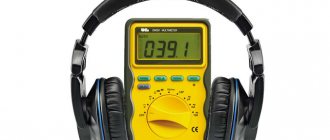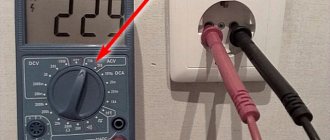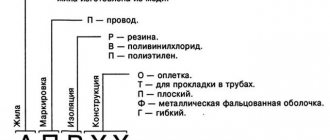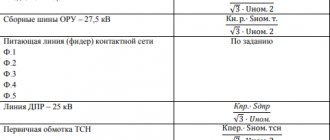For what?
When we began to study electronics, resistors were connected either in series or in parallel, and we learned to replace such combinations with their equivalent resistances, often with the goal of reducing the entire network of resistances to a single equivalent resistance visible from the power supply. After this came circuits (Figure 1) that contained resistors that were neither series nor parallel, but could still be eliminated by carefully identifying and cutting the circuit pieces in the correct order. Note that R1 is not in parallel or series with either R2 or R3, but by combining R2 in series with R4, and combining R3 in series with R5, we can then combine these two equivalent resistances in parallel and finally combining the result in series with R1, obtain the impedance seen by the power supply, which, using Ohm's law, will help obtain the total current of the power supply.
Picture 1
But now we come to the circuits (Figure 2), where there are no pairs of resistors that are connected in series or in parallel, it seems that we have reached a dead end. One way to analyze this circuit is to use Kirchhoff's voltage law (second law) and Kirchhoff's current law (first law) to obtain algebraic equations that we can solve for voltages and currents. While this approach will always work (for this and most other types of circuits), it can be quite cumbersome. We might live with this as the cost of being able to analyze these more complex circuits, but sometimes we can avoid paying this bill by modifying or "transforming" parts of the circuit to turn it into something we can reduce using only the serial/parallel rules associations.
Figure 2
For simplicity, we will only consider DC circuits with resistors, but these principles apply to any AC or DC linear system. Also, to keep the discussion focused on conversions, we will only find the total current supplied by the voltage source, which means we are aiming to reduce the entire network of resistors into a single equivalent resistance.
Let's look at these two schemes in a little more detail (Figure 3). We can see that the only difference between them is what is inside the dotted circles. In each case, the circuit in the circle has three contacts that cross the circle to interact with the rest of the circuit. In the left circuit (Figure 3(a)), resistors are connected to the contacts in a delta configuration (in English literature, a delta configuration, named after the capital Greek letter Δ). And in the right circuit, the resistors are connected in a “star” configuration (in English literature, the “wye” configuration, named after the capital English letter Y, although in the circuit it is upside down).
Figure 3
Now imagine that the resistors inside the dotted circle in the left circuit are placed in a black box, this box is removed from the circuit and replaced with another black box that causes the circuit to behave exactly the same. Next, imagine that when you open this new box it contains three resistors arranged as in the right circuit. Whoever came up with the second black box very carefully chose the resistor values so that the two blocks would be indistinguishable from the rest of the circuit: we know how to analyze the right-hand circuit, and we now know that when we do this, the results can be applied to left diagram because they are equivalent. This is why you need to perform the triangle→star and star→delta transformations.
Varieties of the star of England
The sign placed in the center gives the talisman additional power and abilities.
Sword point down
The most common sign is the sword in the star of England. It can be pointed downwards, which means wisdom and knowledge, or upwards - protection from evil spirits.
The talisman is recommended to be worn by male representatives. It endows its owner with masculinity, determination, bravery and intelligence, helps to tame temperament and find harmony.
The amulet is also suitable for those people whose work involves risk: military personnel, firefighters, security guards.
Women can wear the symbol if they are stressed, attacked by colleagues, and often enter into conflicts and disputes. The talisman will also help mothers raising children alone and those who lack self-confidence.
Amulet with a sword point down for courageous men.
fern color
The Slavs associate ferns with wealth. According to legend, this flower can only be found on the night of Ivan Kupala, and the one who does this will never need money.
A star with a fern helps the owner solve financial difficulties, gives purposefulness and responsibility. The amulet also fulfills dreams, attracts good luck and fortune, and protects against evil spirits.
Amulet Star of England with fern to solve financial problems.
Perunitsa
This variety is complemented by lightning - a symbol of Perun, the main god in Slavic mythology. Perunitsa is capable of destroying the darkness surrounding a person and bringing light and secret meaning into his life.
The talisman protects against any danger and negativity, gossip, damage and the evil eye.
Its owner becomes stronger, more confident, and more easily overcomes difficulties and obstacles along the way. The amulet is considered a source of energy, so it should be worn by those who are very tired at work or are prone to frequent depression.
Perunitsa is recommended for both men and women. For the former, it will strengthen leadership qualities, and for the latter, it will help maintain attractiveness and improve health.
The Perunitsa talisman gives its owner strength.
Basic relationships
To determine the equations relating resistors in a delta-connected circuit to resistors in a wye-connected circuit, we need nothing more than our trusty series/parallel formulas (and a little algebra). The idea is to equalize the equivalent resistances between the corresponding pairs of contacts with the remaining contact disconnected (Figure 4)
Figure 4
Doing this for the equivalent resistance between BC pins gives:
\[R_B + R_C = \frac{R_{BC} \left( R_{AB} + R_{AC} \right) }{R_{AB} + R_{BC} + R_{AC}}\]
If we repeat this process for each other pair of contacts in turn, we end up with two more similar equations, and either one will give us the information we need (provided we recognize the symmetry involved).
Special case: symmetrical circuits
If the resistances in each leg of a delta or star connected circuit are equal, the circuit is considered “symmetrical”. It means that
\[R_∆ = R_{AB} = R_{BC} = R_{AC}\]
\[R_Y = R_A = R_B = R_C\]
Combining this condition with the relation from the previous section immediately leads to the transformation equation for the symmetry case.
\[2R_Y = \frac{R_∆(2R_∆)}{3R_∆}\]
\[R_Y = \frac{R_∆}{3}\]
\[R_∆ = 3R_Y\]
This is a much more significant result than it might seem at first glance, and the reason is quite simple - when engineers design delta or star circuits, they often try to make the circuits symmetrical. Although, of course, this is not always possible, and therefore we should be able to deal with the general case when the circuit is not symmetrical.
A little history about the constellation Triangulum
Since the constellation Triangulum is quite ancient, its appearance on the celestial sphere is not without a mythological history.
The area was originally called Sicily. According to legend, the goddess Ceres turned to Jupiter with a request to place the island of Sicily in the sky. As a result, she wanted to immortalize him for all time.
Island of Sicily
The constellation Triangulum is also known by other names. For example, in Ancient Greece it was called Deltoton. This name was given in honor of the letter of the Greek alphabet, which the area was similar in shape to.
General case of triangle→star transformation
For the delta/star conversion, we are given a known delta-connected circuit and we want to find the values for the equivalent star-connected circuit - so we try to find {RA, RB, RC} for the given {RAB, RBC, RAC}.
We'll start by rewriting our basic relationships from the original form in a slightly more compact form by defining a new quantity, RΔS, which is equal to the sum of the resistances of all the resistors in the delta-connected circuit.
\[R_{ΔS}=R_{AB}+R_{BC}+R_{AC}\]
We then rearrange our relation to obtain the form of a linear algebraic equation with unknowns {RA, RB, RC}.
\[(0)R_A+(R_{ΔS})R_B+(R_{ΔS})R_C=R_{AB}R_{BC}+R_{BC}R_{AC}\]
Since we have three unknowns, we need two more equations. They are obtained from the equivalent resistances visible when considering the other two pairs of contacts. Doing this (or using symmetry) we get
\[(R_{ΔS})R_A+(0)R_B+(R_{ΔS})R_C=R_{AB}R_{AC}+R_{BC}R_{AC}\]
\[(R_{ΔS})R_A+(R_{ΔS})R_B+(0)R_C=R_{AB}R_{AC}+R_{AB}R_{BC}\]
Adding these two equations together and subtracting our first equation gives us
\[2(R_{ΔS})R_A=2R_{AB}R_{AC}\]
\[R_A= {R_{AB}R_{AC} \over R_{ΔS}}\]
We can solve the system equation for the other two unknown resistances (or use symmetry) to get
\[R_B= {R_{AB}R_{BC} \over R_{ΔS}}\]
\[R_C= {R_{AC}R_{BC} \over R_{ΔS}}\]
These relationships can be summarized very compactly. The resistance connected to each node in an equivalent wye-connected circuit is equal to the product of the resistances connected to the corresponding node in a delta-connected circuit divided by the sum of the resistances of all resistors in the delta. This is usually expressed by a formula such as
\[R_N= {R_{N1}R_{N2} \over R_{ΔS}}\]
Where
- RN – resistor connected to pin N in a star circuit;
- RN1 and RN2 are resistors connected to pin N in a delta circuit
The meaning of the symbol in different religions and countries
Magendovid - what is it? This symbol is found in the cultures of different nationalities, starting with ancient civilizations. At the same time, the sign has retained its appearance for many millennia, while its essence has undergone many changes.
Some peoples associated the sign with God, others with Satan. In some cultures, it was believed that the hexagonal star helps to gain secret knowledge.
Thus, the meaning of the Star of David differs significantly in different countries:
- The Sumerians associated this sign with the goddess Ishtar. She was considered the patroness of war and carnal pleasures.
- In Middle Eastern countries, this sign symbolized the white lily.
- In Indian culture, the symbol was used to represent the Anahata heart chakra. Also in India there was another interpretation, which meant the unity of creation and destruction.
- Christians saw the symbol as a model of the universe, since God created the earth in 6 days. However, some Christians, on the contrary, are wary of this sign. According to one theory, the number of the beast is hidden in it.
- In Islam, such a star is considered a symbol of wealth and prosperity.
Today this sign evokes strong associations with Judaism. In Jewish culture it is called Magen David. At the same time, initially the symbol was purely decorative, but over time it acquired special meaning.
In the nineteenth century, emancipated Jews adopted the Star of David as a national symbol and began using it as an alternative to the Christian cross.
The sign adorns the Israeli national flag.
General case of star→delta transformation
For the star-delta conversion, we are given a known star-connected circuit and we want to find the values for the equivalent delta-connected circuit. Hence, we try to find {RAB, RBC, RAC} for given {RA, RB, RC}.
This is not as simple as the delta-wye conversion because the unknown resistances are multiplied together, making the resulting equations nonlinear. Fortunately, we can get around this inconvenience by considering the ratios of the resistors in each circuit. For example, taking the ratio of RA to RB we get
\[{R_A \over R_B} = { R_{AB}R_{AC} \over R_{AB}R_{BC} } = {R_{AC} \over R_{BC} }\]
In other words, the ratio of the resistances of the resistors connected to any two terminals in a star circuit is equal to the ratio of the resistances of the resistors connecting the same two terminals to the third terminal in a delta circuit. Therefore, the other two relations will be as follows
\[{R_B \over R_C} = {R_{AB} \over R_{AC} }\]
\[{R_A \over R_C} = {R_{AB} \over R_{BC} }\]
Armed with this, we could return to our basic relations and work with them further, but it is easier to use one of the relations from the general case of the triangle→star transformation as a starting point.
\[R_A= {R_{AB}R_{AC} \over R_{AB} + R_{BC}+R_{AC} }\]
\[R_{AB}R_{AC} = R_A (R_{AB} + R_{BC}+R_{AC})\]
\[R_{AB} = R_A \left( {R_{AB} + R_{BC}+R_{AC} \over R_{AC} } \right)\]
\[R_{AB} = R_A \left( {R_{AB} \over R_{AC}} + {R_{BC} \over R_{AC} } + 1 \right)\]
\[R_{AB} = R_A \left( {R_{B} \over R_{C}} + {R_{B} \over R_{A} } + 1 \right)\]
\[R_{AB} = R_A + R_B + {R_AR_B \over R_C } \]
The other two expressions are obtained similarly (or according to symmetry):
\[R_{BC} = R_B + R_C + {R_B R_C \over R_A } \]
\[R_{AC} = R_A + R_C + {R_A R_C \over R_B } \]
These expressions can be generalized very compactly. The resistance connected between each pair of nodes in a delta-connected equivalent circuit is equal to the sum of the resistances of the two resistors connected to the corresponding nodes in a star-connected circuit, plus the product of the resistances of those two resistors divided by the resistance of the third resistor.
A common way to express this is to place the right-hand side under the common denominator, and then note that the numerator in each expression is the sum of the products of each pair of resistances in the star-connected circuit, and the denominator is the resistance connected to the third terminal.
\[R_{AB}={R_P \over R_C}\]
\[R_P = R_A R_B + R_B R_C + R_A R_C\]
Star of England Tattoo
The Star of England can be worn not only as a decoration, but also as a protective tattoo with this sign.
Is it worth applying?
Most often, tattoos with this Slavic symbol are made by young men. It is believed that such a pattern has a strong influence on fate and character: it gives masculinity, confidence, courage, and protects against injustice.
By applying a tattoo to the skin, a person binds himself with unbreakable vows, making a promise to the Higher Powers to be persistent and resilient. Due to the great power of such symbolism, not everyone is able to endure the trials and circumstances associated with the influence of the sign.
Where to stuff
Girls are recommended to place the tattoo between the shoulder blades, on the back of the neck, wrist or forearm. For men, you can have the image tattooed on your hand, shoulder, back, or forearm.
The star cannot be applied in the area of the heart. The strong energy of this amulet can provoke rapid heartbeat and difficulty breathing.
People who have decorated their body with such a tattoo report positive changes in their lives: immediately after application, their well-being improved, fears and doubts disappeared, strength and additional motivation appeared to move forward.
Example
Let's work through the problem shown in Figure 5. Before we begin, let's define the expected answer so that we have a good check of whether our final answer is correct. To do this, consider the role of a 150 Ohm bridge resistor. This resistor serves to reduce the overall resistance by providing a path between the left and right sides of the circuit. Therefore, the highest effective resistance will occur if this resistor is removed completely, in which case the total resistance will be equal to the parallel combination of the left and right sides, resulting in
\[R_{eq.max}=(100 +220)||(470+330)=228.6\; Ohm\]
On the other hand, the lowest total resistance would be obtained by reducing the bridge resistor to a direct short circuit, in which case the total resistance would be equal to the parallel combination of the top two resistors in series with the parallel combination of the bottom two resistors, resulting in
\[R_{eq.min}=(100||470)+(220||330)=214.5 \; Ohm\]
Now we KNOW that our answer MUST be between these two extremes. In many cases, a simple boundary analysis such as this will lead to an answer that is "good enough" for the purpose, but let's assume that this is not the case. Using the delta-wye conversion equations above, we first determine the sum of the resistances of the delta resistors.
\[R_{ΔS}=100+150+470=720\; Ohm\]
And then we find the value of R1 by multiplying the resistances of the two resistors that are connected to the upper contact, and dividing this product by the sum of all three resistances.
\[R_1={100⋅470 \over 720}=65.28 \; Ohm\]
Let's repeat the same for R2.
\[R_2={100⋅150 \over 720}=20.83 \; Ohm\]
We could do this again for R3, but let's instead define R3 using relational properties.
\[{R_3 \over R_1}={150 \over 100}⇒R_3=1.5R_1=97.92 \; Ohm\]
Now that we have all the resistances for the star equivalent circuit, we can very easily determine the total resistance.
\[R_{eq.}=R_1+[(R_2+220)||(R_3+330)]=219.4 \; Ohm\]
Since this value is between our minimum and maximum bounds, we are completely confident that this is the correct answer, or, even if we made a mistake, our answer is quite close to the correct one. Therefore, the total current is equal to
\[I={12\; B\over 219.4\; Ohm}=54.7\; mA\]











